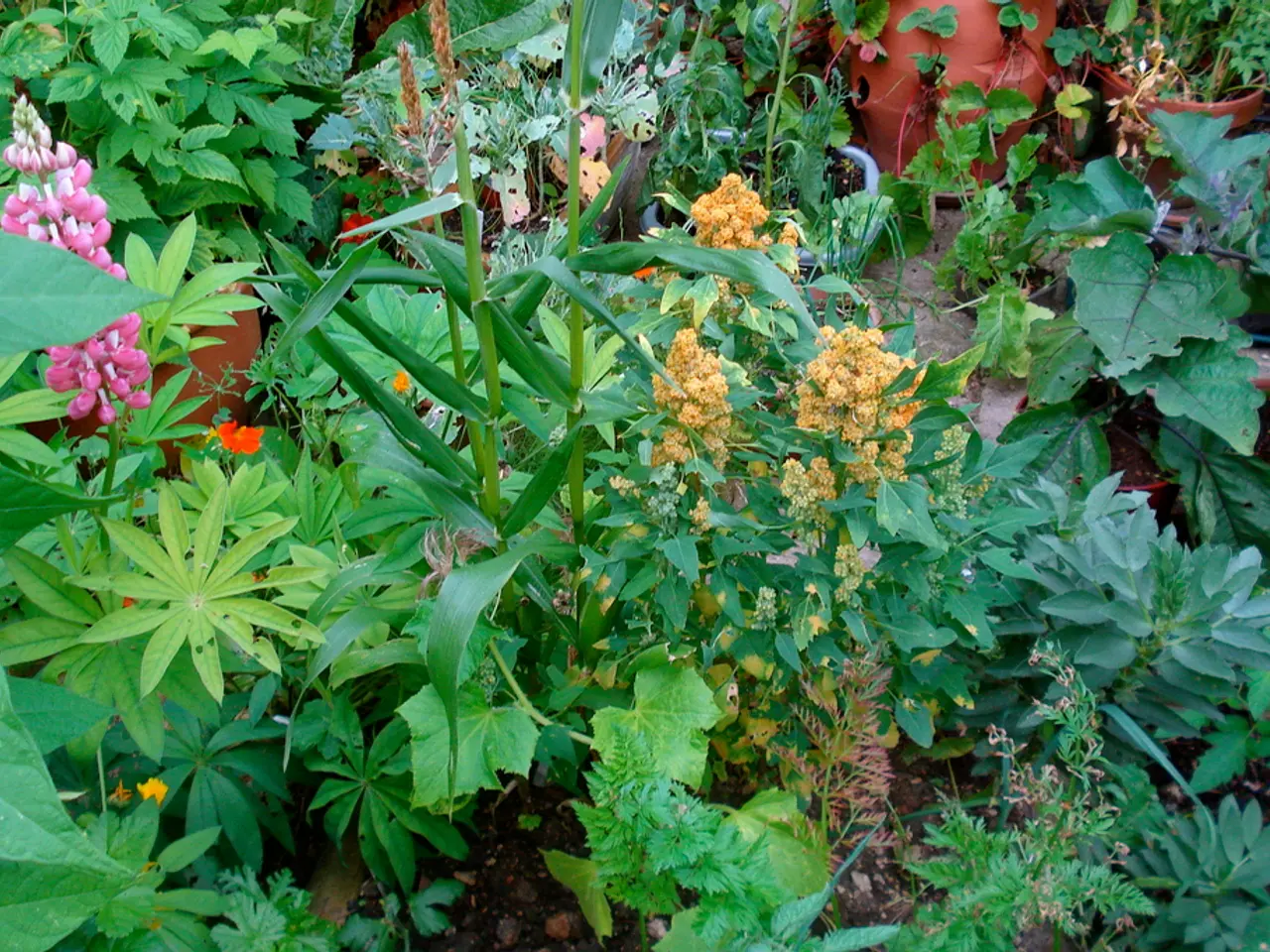Quick strategies for efficient gardening for the time-strapped allotment holders
Gardener's Time-Saving Tips and Allotment Practices
In a small Surrey village, a dedicated gardener tends to his allotment, a "happy place" that provides fresh produce for home-cooked meals. With limited time due to his part-time teaching role and raising a young family, the author has developed a strategic approach to maintaining a productive allotment.
For those with similar time constraints, top time-saving tips include mulching to retain soil moisture, watering smartly and directly at the roots, focusing on priority plants, and watering during cooler parts of the day to reduce evaporation. Additionally, using methods like collecting and reusing rain or grey water can save effort and resources.
Key practical strategies are:
- Mulch your soil using compost, grass clippings, or hay to lock in moisture, reduce weeds, and protect roots, which cuts down frequent watering and weeding time.
- Water deeply once a day at the roots, avoiding wetting leaves, to promote stronger plants and reduce daily watering needs.
- Prioritize watering young and more sensitive crops such as lettuces, peas, and beans, rather than established, drought-tolerant vegetables like carrots and beetroot which need less frequent watering.
- Time your watering to early morning or evening to maximize water absorption and minimize evaporation losses.
- Collect water via water butts or reuse grey water from household tasks to reduce watering effort during restrictions like hosepipe bans.
- Start simple by clearing weeds efficiently, which improves soil and plant health and saves ongoing maintenance time.
By combining these approaches, an allotment gardener can maximize productivity and minimize time investment despite limited availability for daily care.
The author's allotment planning takes into account the need for good support for vertically growing plants due to windy conditions. Small structures made of pallets are used for climbing squash to prevent them from blowing over. Direct sowing is preferred for vegetables such as beans, peas, and carrots to allow plants to grow stronger without root disturbance.
In colder areas, the author uses fleecing to give seeds a head start at the beginning of the season. Perennial vegetables are recommended for saving time, as they come back every year without needing to be grown from seed. Examples include Taunton Deane Kale, Nine Star broccoli, artichokes, and soft fruit bushes.
The author advises working with nature rather than against it when planning the allotment. Mulch is considered beneficial for the allotment, improving soil health, suppressing weeds, and helping to retain moisture. The allotment is divided into 16 beds to make it more manageable.
Before having children, the author could spend all day at the allotment making everything perfect. Now, the author cherishes every moment spent in this "happy place," grateful for the fresh produce it provides and the connection it offers with the natural world.
The home-and-garden enthusiast's strategic allotment approach includes mulching to enhance productivity, reduce weeding, and minimize watering time, thus aligning well with a busy lifestyle that necessitates time-saving practices. Additionally, by prioritizing watering sensitive crops, gardening enthusiasts can maintain a thriving garden without spending countless hours on upkeep.




